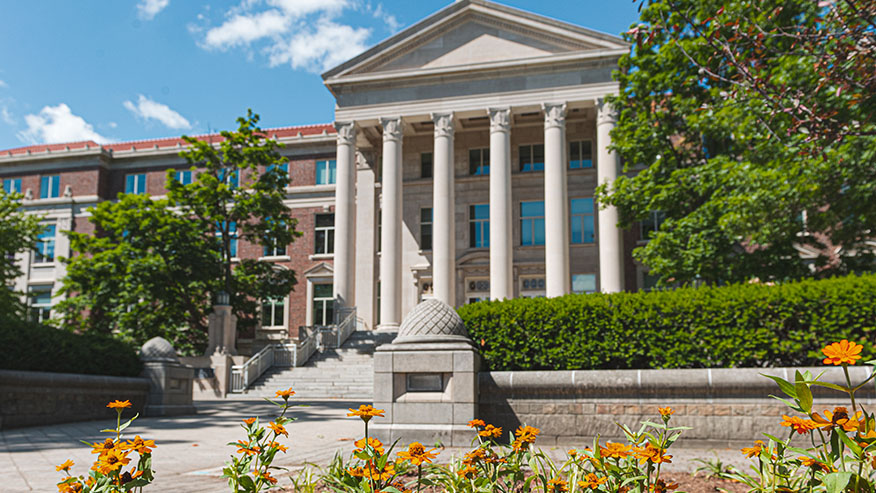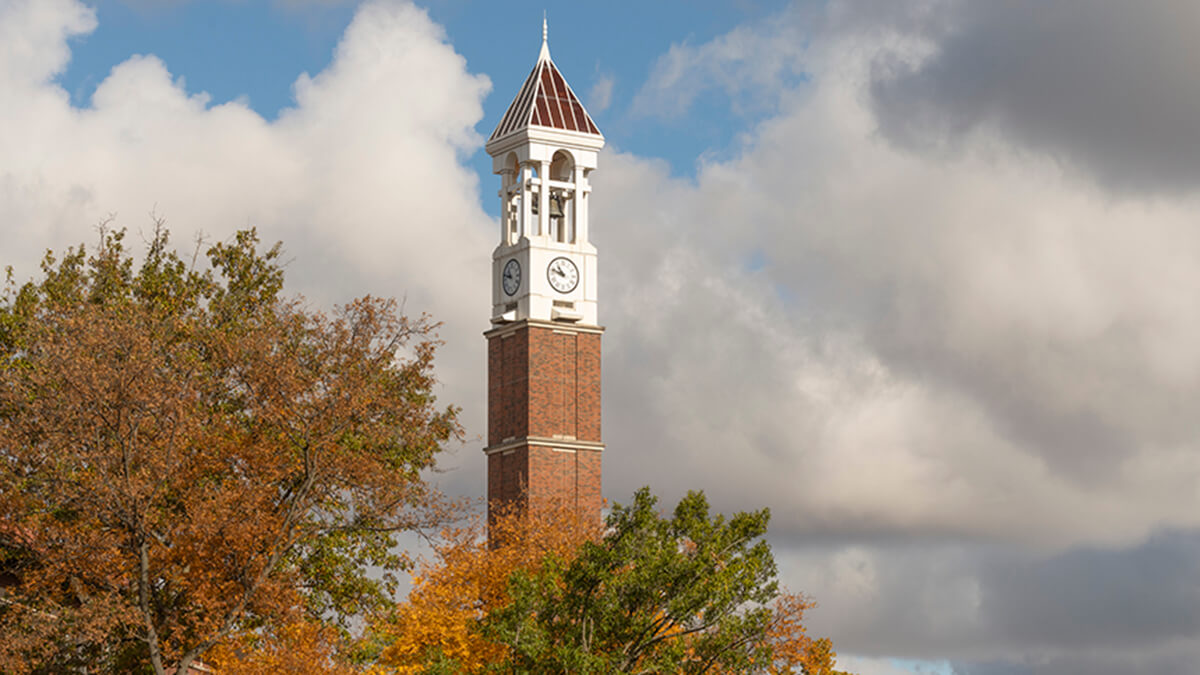Digging deeper into the Grounds department’s planting process

The inside of the greenhouse at the Grounds Maintenance Facility holds a variety of colorful plants that will be planted around Purdue's West Lafayette campus. (Photo provided by Sustainability)
All across Purdue’s campus, vibrant plants and landscapes are plentiful and easy to spot. Crews with the Grounds department work hard year-round to make sure campus is looking its best, and it all starts at the Purdue Grounds Maintenance Facility, where the department grows and maintains the color on campus that these plants provide.
At the Purdue Grounds Maintenance Facility, located on South Russell Street, there are two greenhouses with a plethora of planting spaces, as well as compost piles. There is a spot behind the greenhouses for the perennials and pots of plants that can be used to help add color and interest to events and celebrations, such as graduation ceremonies.
The work begins long before the plants are planted. Seeds are purchased in the fall for the next year and stored in a dark, cool environment.
Germination for about 40,000 plants then begins the second or third week of January. Inside the greenhouse is a germination chamber draped with clear plastic. The plastic covering helps control the chamber’s humidity and temperature. The seeds are put into germination trays that have long narrow cells filled with soil. The trays are then placed on electric heat mats within the chamber to control the temperature of the soil within the trays. Additionally, each of the trays is covered with a domed plastic cover to provide greater control of the microclimate of the germinating seed and the seedling once it begins to grow.
“It definitely takes the specific knowledge and experience our greenhouse staff have because different seed types require different soil temperatures. This helps gain the best germination rate of the sown seed,” says Phil Richey, director of Grounds.
The seeds are then taken care of at the greenhouse as they grow into the mature plants – including flowers – that will be planted in beds and landscapes throughout campus. The planting starts in late April or early May and is not finished until mid-June. At the end of the calendar year, the plants are harvested out of their beds and composted. It’s a process that saves the university money.
“Seed and plugs purchased each year are under $5,000. It’s definitely more cost-effective, compared to the nearly $25,000 it would take to purchase the same number of flowers ready to plant,” Richey said. “Purchasing seeds also allows for a greater diversity of plant type and varieties.”
When it comes to pesticides and fungicides, Richey said the Grounds department does not use any in its greenhouses. Two years ago, the greenhouse staff switched to using beneficial insects. The staff found the insects to be very easy to distribute, and they were more cost-effective and eco-friendlier. The quality of the plants has not diminished since the change, Richey said.
“Our department thoroughly enjoys this work,” Richey continued. “It’s really rewarding to see months and months of work pay off when campus is bright with color and all our beds are full and thriving.”
The Grounds department is part of the Administrative Operations organization. The organization supports the university by providing safe, reliable and transformative services. Finding cost-effective ways to help keep campus beautiful and lively is just one of many ways Administrative Operations powers Purdue.



